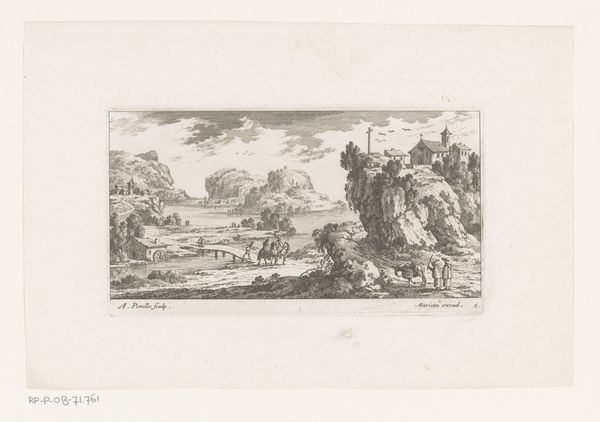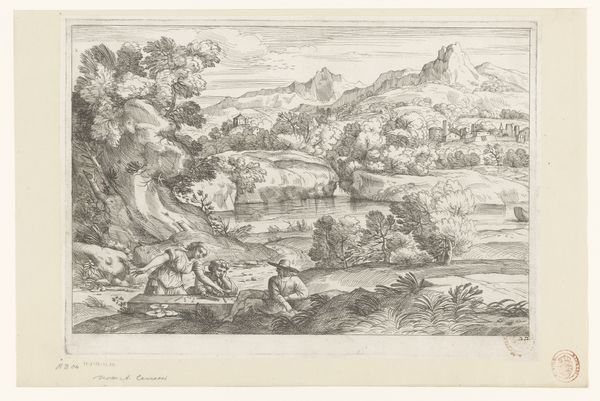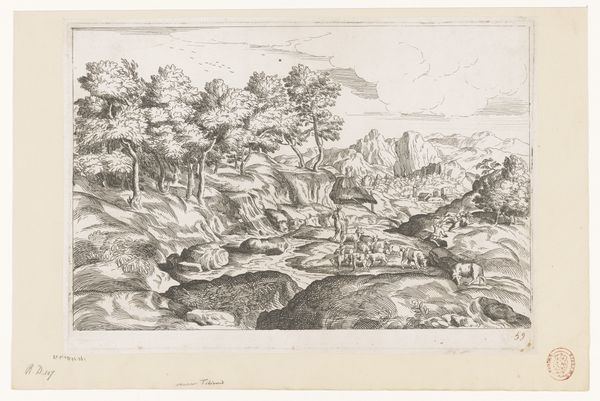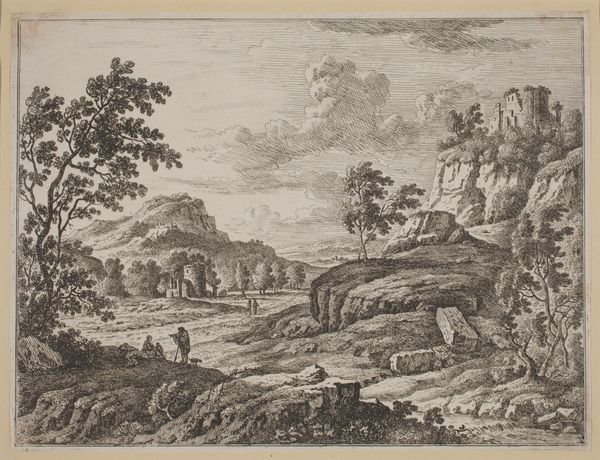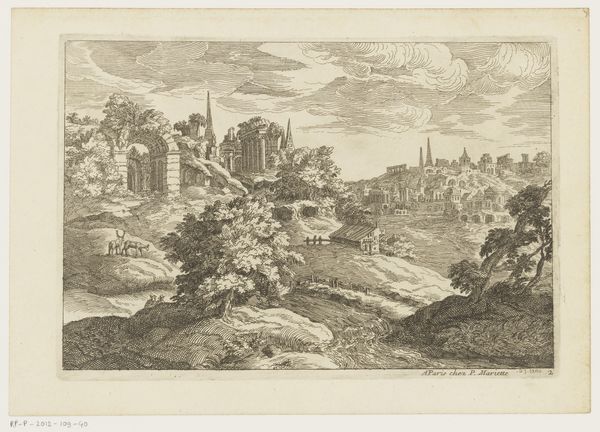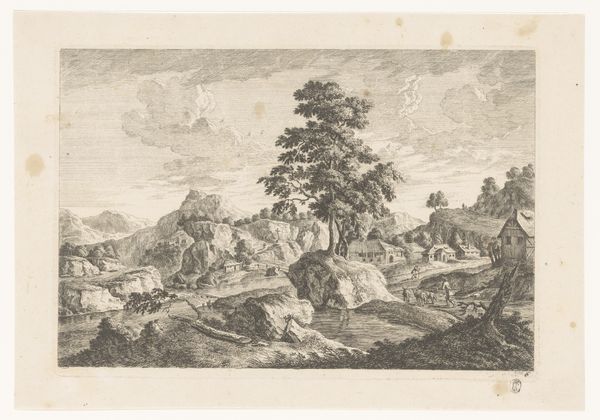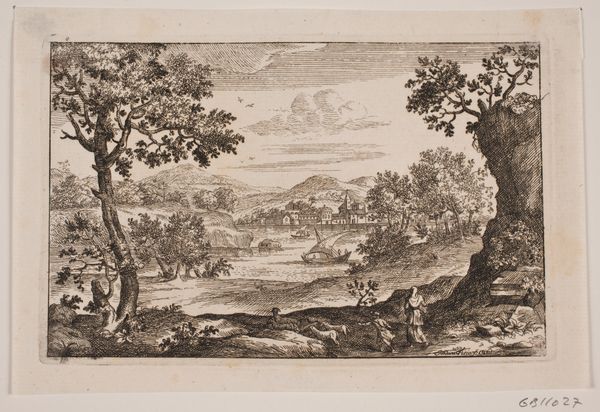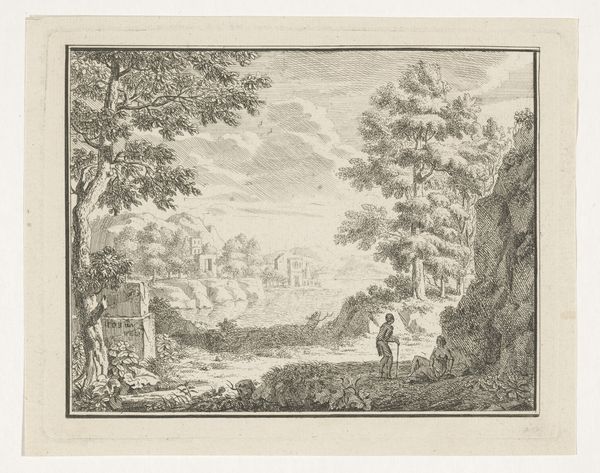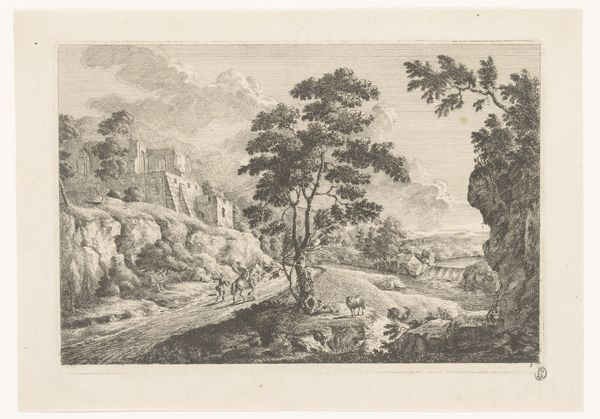
drawing, print, etching, engraving
#
drawing
#
narrative-art
#
baroque
#
dutch-golden-age
# print
#
etching
#
landscape
#
line
#
cityscape
#
history-painting
#
engraving
Dimensions: height 153 mm, width 230 mm
Copyright: Rijks Museum: Open Domain
Dominique Barrière etched this landscape, a small window into 17th-century life. Observe the prominent castle on the hill—a classic symbol of power, security, and perhaps isolation. The castle evokes images of medieval fortresses, yet here, it appears almost softened, domesticated. Recall similar structures in illuminated manuscripts or tapestries, where castles signified not just dominion but also romance and chivalry. But consider this: even as the castle stands for strength, it also suggests vulnerability. Its placement on a high point makes it visible, exposed. This echoes the psychological tension between wanting to protect and feeling threatened, a duality that plays out across history, from ancient city walls to modern gated communities. The collective memory of sieges, betrayals, and fallen strongholds lingers, influencing how we subconsciously interpret this image, a potent reminder of our ever-present fears and desires. Thus, the castle endures, its form evolving, its symbolic weight shifting, yet always reminding us of the enduring human quest for safety and control in an unpredictable world.
Comments
No comments
Be the first to comment and join the conversation on the ultimate creative platform.
